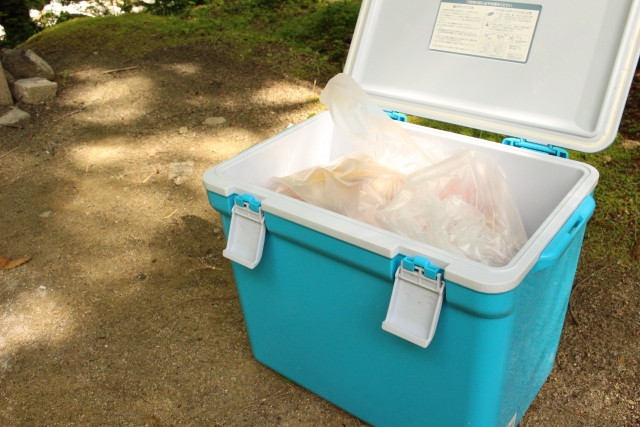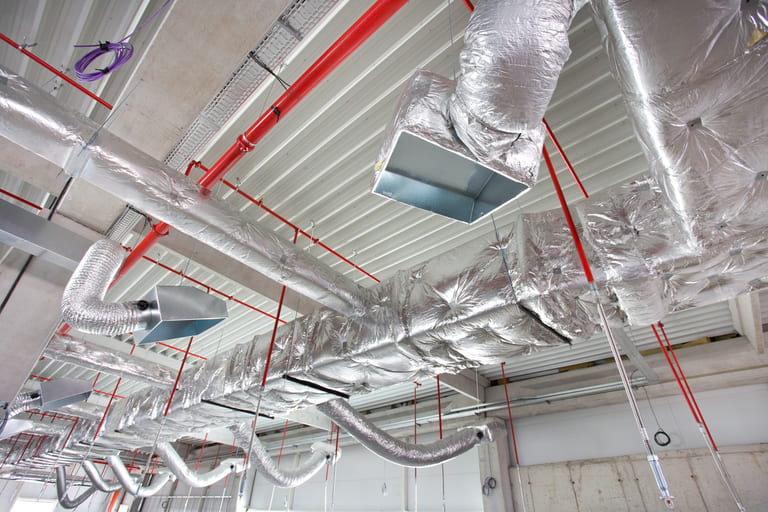

Taiyo Kogyo Column
Explanation of how commercial cold storage bags work! How to choose a cold storage bag that won’t fail?
2020.04.22

社会変化の影響を受け低温物流・定温物流のニーズはどんどん拡大しています。それに伴い業務用クーラーボックスも様々な商品が登場してきています。
当然、品質や性能はバラバラでクーラーボックスを選定する基準は多くなります。
とはいえ、あれもこれも試している余裕はなかなかありませんので、もっとも重要な要素である「保冷力」に的を絞って考えてみたいと思います。「クーラー」ボックスですから、まずは「保冷力」「保冷性能」が高くなくてはなりません。
本記事では、クーラーボックスの選定を絶対に失敗できない方のために、クーラーボックスの仕組みを「簡単に」ご説明します。効率的で保冷力の高いクーラーボックスを選べるようになること間違いなしです
記事最後には、「とりあえずこれを選べば間違いない」というおすすめの商品もご紹介します。
How a commercial cooler box keeps the cold
Start by knowing how the cooling performance of a cooler box works. Once you know how it works, you can choose a superior one.
- There are three types of heat transfer (conduction/convection/radiation), all of which have the property of flowing from higher to lower temperatures.
- Insulation is what keeps these “flows” down so that high temperatures do not flow into low temperatures.
- The mechanism of cooling in a cooler box is that the temperature outside the box and the temperature inside are intercepted by the insulation material to prevent heat from being transferred.
What determines the cooling capacity of a commercial cooler box?
What is the reason for the difference in cold holding capacity among different products? What determines the cooling power? Once you understand what makes the difference in cooling power, you will be able to select a superior cooler box more logically. In conclusion, the cooling power is determined by the structure of the cooler box and the performance of the insulation material. Structure here refers to ” airtightness. No matter how good the insulation material is, it is meaningless if the box is constructed in such a way that the air inside the box is in direct contact with the air outside. If there is a seam or a gap in the lid, the airtightness will decrease, so checking the sewing and the construction of the lid will give you a hint for choosing an airtight cooler box. Next is the performance of the insulation material. There are various types of insulation materials, each with different insulation properties. Insulation performance can be expressed in numbers, and there are three main indicators.
- Thermal Conductivity: Ease of heat transfer.
- Thermal Resistance: Difficulty of heat transfer
- Thermal Transmittance: The amount of heat that passes through one square meter per hour.
Since these basically correlate, it is almost safe to focus only on the general standard of “thermal transmittance. Thermal transmittance is expressed in “W/m2-K,” and the lower the value, the less heat is transferred. Please refer to the following table to understand just how different types of insulation materials make such a difference.
| Insulation material | Thermal transmittance: W/m2-K (when material thickness is 50 mm) |
| Urethane foam | 0.42~0.52 |
| Polystyrene foam (general insulation material) | 0.56~0.86 |
| Glass wool | 0.72 to 1.00 |
| Rock wool | 0.76 |
| Cellulose Fiber | 0.8 |
| Rock wool felt | 0.98 |
In other words, the more airtight the construction and the “lower” the penetration rate, the better the cold retention.
What commercial cooler boxes are airtight and well insulated?
For those who say, “I understand how it works, but I don’t have time to compare each product one by one,” here are some specific recommendations. First, thermal transmittance. Remember that this should be around 0.17 W/m2-K when the insulation thickness is 30 mm. Since the thermal transmittance of a typical cooler box on the market is about 0.67 W/m2-K, this is a fairly high standard. The insulation material that can achieve this high standard is PUVIP, a vacuum insulation material developed by Taiyo Kogyo. This insulation material is made by vacuum packing high-density glass wool, and it provides better insulation performance than XPS (extruded polystyrene foam), which is a common insulation material.
高い断熱性を持ち、気密性に優れた構造であるうえ、内容量まで確保できるおすすめの業務用クーラーボックスが、太陽工業社の「ジェットシッパー」です。 「ジェットシッパー」は生協の要望から生まれた商品であり、独自開発の優れた断熱材を使用して圧倒的な低熱貫流率を実現し、既に多くの企業が導入を始めているもので、信頼性が高いことがおすすめできる理由です。
summary
How does the cooler box keep the cooler cold?
- There are three types of heat transfer (conduction/convection/radiation), all of which have the property of flowing from higher to lower temperatures.
- Insulation keeps these “flows” down so that high temperatures do not flow into low temperatures.
- The cooling mechanism of a cooler box is to shield the temperature outside the box and the temperature inside the box with insulation material to prevent heat transfer.
And the key to the difference in cold retention is the difference between airtightness and insulation. Airtightness is determined by sewing and lid construction, while insulation performance is compared numerically by “thermal transmittance. The ideal cooler box has a cooling capacity of 0.17 W/m2-K. This excellent standard is achieved by PUVIP, a vacuum insulation material developed by Taiyo Kogyo. The commercial cooler box “Jet Shipper” using PUVIP has high insulation and airtightness, and is small in size. It is a reliable product that has been developed in response to requests from a co-op and has been introduced into many companies. The performance of the cooler box required by each company is slightly different, but as an example of an excellent product, please contact us about the “Jet Shipper” first.
You can purchase our products including “Jet Shipper” from this page (Rakuten Ichiba).
Related Articles
- TOP>
- Taiyo Kogyo Column>
- Explanation of how commercial cold storage bags work! How to choose a cold storage bag that won’t fail?








